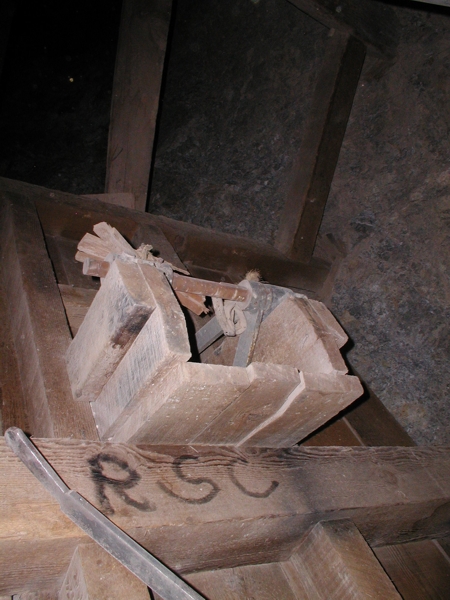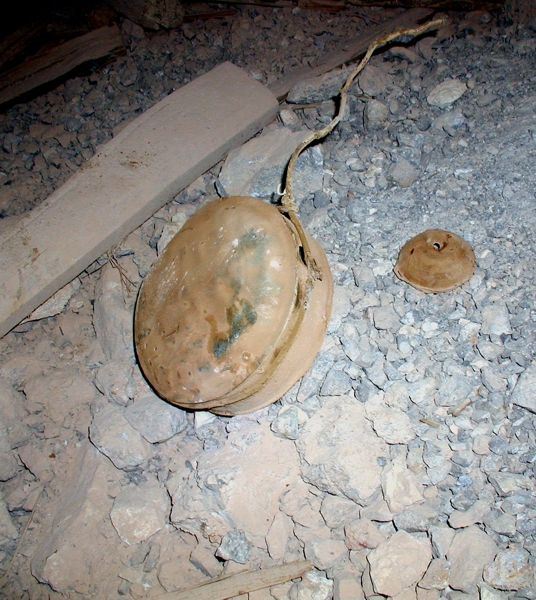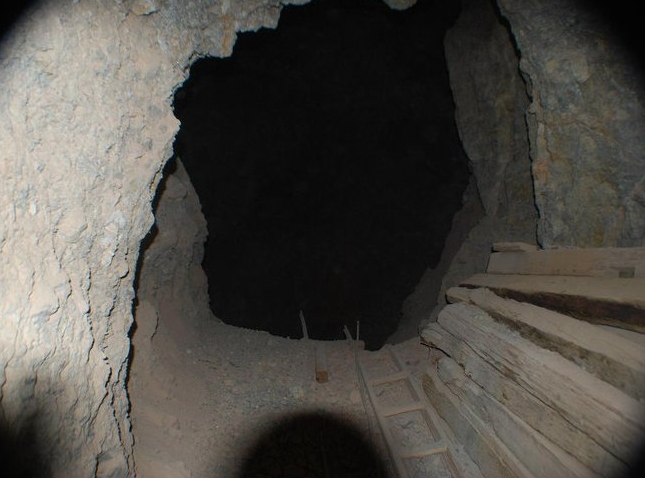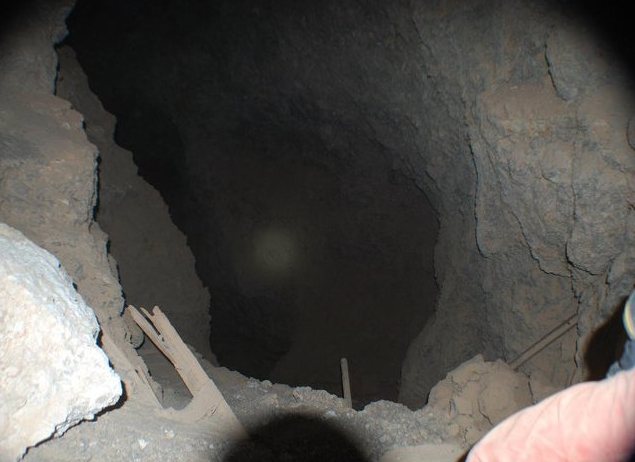
 |
Page 3 |
| After getting up enough nerve to cross the bridge, we found this
inclined shaft. Now the REAL fun begins. This is the gateway to the less visited portions of the mine. |
 |
| Holy cow! That's a LONG way down. Even with our strong lights we couldn't see the bottom. We use safety equipment much like mountain climbers to make the descent more safe. I hope that 200 feet of rope is enough... |  Photo courtesy of Chris Kroschinski Photo courtesy of Chris Kroschinski |
| As we descend down to the lowest level of the mine, we see that there are two other levels that intersect the inclined shaft. |  Photo courtesy of Chris Kroschinski |
| Ahh, made it safely to the bottom. At each level there is an ore hopper built into the floor. Ore mined at this level is dumped into the hopper, then loaded into carts running on the inclined rail. |  |
| Looking down into a hopper, you can see where the ore was dumped. |  |
| Down inside the shaft is this ore chute that was used to load the ore from the hopper into a cart on the inclined rail. |  |
| As we start to explore this level the drift splits in two directions. You can see some of the track still on the floor. |  Photo courtesy of Chris Kroschinski |
| It's hard to tell from the photo, but this is an old canteen. At some point the strap broke and the miner fashoned another one out of wire. |  |
| Chris posing next to an ore chute. Notice the air meter on his right shoulder. It warns us if we run into bad air. |  |
| This is the largest underground ore hopper that I've seen. There is a ladder that leads to the top. |  Photo courtesy of Chris Kroschinski |
| Early miners used candles, but carbide lamps provided light for miners at the Sultan. |  |
| Chris checks out a small workbench at the lowest level. |  |
| There's not a lot of shoring in this mine, but this section obviously required some. |  Photo courtesy of Chris Kroschinski |
| Chris crawls back behind some lumber to explore. He found a way up to the next level. |  |
| Here's where the second level intersects with the inclined shaft. On the right hand side of the ladder you can see our rope leading down to the bottom level. |  |
| Yes, it was spooky when we first approached this opening. It seemed like the stope just absorbed our lights. |  Photo courtesy of Chris Kroschinski |
| Once we got our lights focused on the other side of the stope we could see the continuation of the drift we were standing in. Believe it or not, we were able to climb our way around and continue to explore. |  Photo courtesy of Chris Kroschinski |
| Of course they are safety fuses! We don't want unsafe fuses do we?? |  Photo courtesy of Chris Kroschinski |
| This is the first time I've seen a grizzly from the bottom side.
A grizzly is a "strainer" that lets the smaller rocks through but stops the larger ones. |
 |
| Back at the inclined shaft Chris snaps a photograph of our upcoming climb. We figure it's about 150 feet to the top of the ladder. Some folks don't use ropes, but we do. |  |
| All of the wood is in surprisingly good shape for being as old as it is. |  |
| As we climb towards the upper level, we come across this great ore chute. I've never seen one with a metal gate like this. |  |
| Here I am getting ready to explore the first level. What's not obvious is that I'm standing on a 10" wide board over a 60 foot drop. Did I mention that I'm afraid of heights? No really, I'm afraid of heights.... |  Photo courtesy of Chris Kroschinski |
| This is looking down into the same stope that we explored at the
lower level. This stope has to be close to 200 feet from top to bottom and 50
feet in diameter. This is an amazing mine. Much larger than it originally appears. |
 Photo courtesy of Chris Kroschinski |
| My son and I are getting ready to head home after a fun day of exploring the Sultan complex. |  |